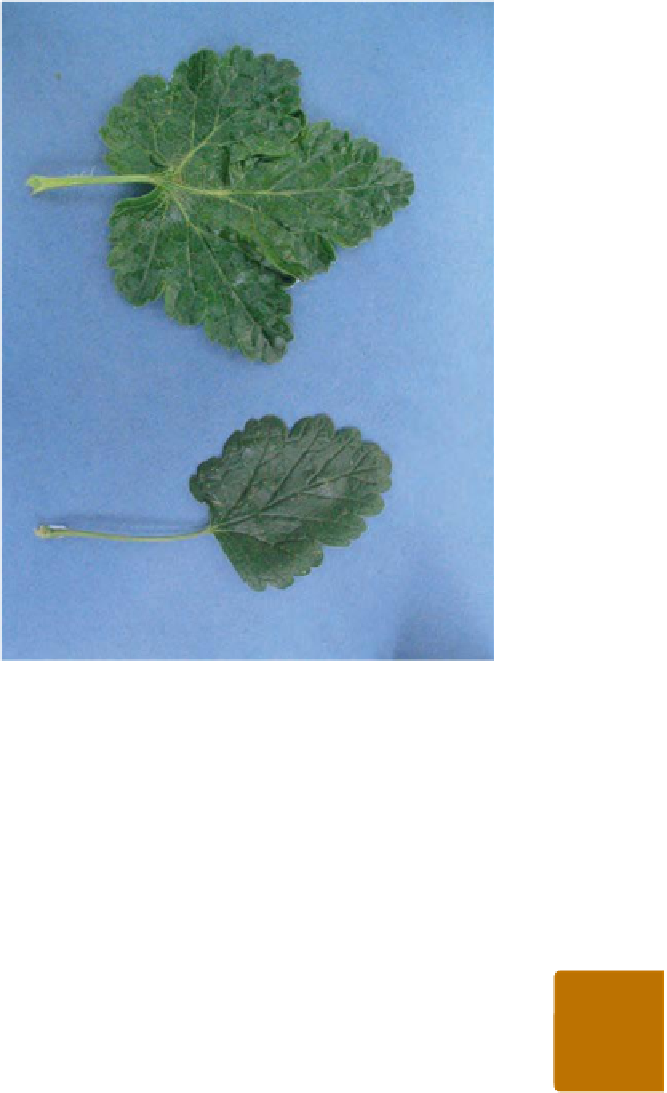Agriculture Reference
In-Depth Information
Figure 19.20
Leaf roll virus on potatoes. The leaves
are thickened and roll upwards
the whole growing period of the crop. The aphid is
likely to move from plant to plant and may be blown
considerable distances by wind currents. A high
spring incidence of aphids usually results in increased
levels of leaf roll.
Control
. A range of resistance and cultural controls
are available. A cultivar such as 'Valor' has resistance
to leaf roll (also to 'spraing', a nematode-transmitted
virus that causes brown staining in tubers, and to
some strains of potato cyst nematode). Do not grow
your potato crop from last year's tubers, but buy
certified potato 'seed' (see also p. 194). Remove any
plants showing leaf roll symptoms. Some gardeners
spray their potato crop in June with an insecticide
such as deltamethrin against the aphid vector, but
the virus may already be in the plants before spraying
takes place.
Figure 19.21
Reversion disease on blackcurrant. Note
that the infected leaf (bottom) has fewer main veins
and leaf lobes than the healthy leaf (top)
Tulip break
The petals of infected tulips produce irregular
coloured streaks and may appear distorted. Leaves
may become light green and the plants stunted after
several years' infection.
The virus is spread mechanically by knives, while three
aphid vectors are known: the bulb aphid in stores,
the melon aphid in greenhouses, and the peach-
potato aphid outdoors and in greenhouses. Preventive
control must be used against this disease. Removal
of infected plants in the garden prevents a source of
virus for aphid transmission.
Reversion disease on blackcurrants
19
Damage
. This virus disease, caused by blackcurrant
reversion virus, can seriously reduce blackcurrant
yields. Flower buds on infected bushes are almost
hairless, and appear brighter in colour than healthy
buds. Infected leaves often have fewer main veins
than healthy ones (Figure 19.21). After several years
of infection, the bush may cease to produce fruit.
The virus is spread by the blackcurrant gall mite, and
reversion infected plants are particularly susceptible to
attack by this pest. Removal and burning of infected
plants is an important form of control. Use of certified
plant material, raised in areas away from infection and
vectors, is strongly recommended. Control of the mite
vector in spring and early summer is described on
p. 245.
Plum pox
This virus disease, also called 'Sharka', has increased
in importance in Britain and Ireland since 1970, after its
introduction from mainland Europe. Plums, damsons,
peaches, blackthorn and ornamental plum are affected,
while cherries and flowering cherries are immune. Leaf
symptoms of faint inter-veinal yellow blotches can best
be seen on leaves from the centre of the infected tree.
The most reliable symptoms, however, are found on
fruit, where sunken dark blotches are seen. The virus


